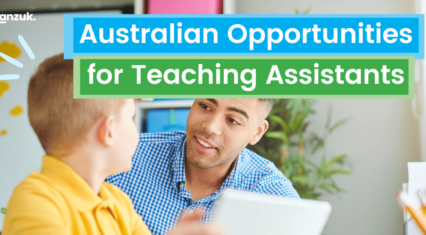Search
Get Started
September 14th 2023 is R U OK Day…
R U OK Day aims to inspire and empower everyone to meaningfully connect with people around them and support anyone struggling with life. Looking out for one another and lending support is a key life skill for any age group. This blog has been designed to encourage young students to look out for their classmates by recognising emotions and asking R U OK?
Help Children to Identify their Emotions
Identifying and labelling your feelings and those of others is a valuable life skill that takes lots of practice. Including social-emotional activities in the classroom can not only be a fun and engaging experience for your early learners, but it also presents the opportunity to start important conversations that lead to a more profound understanding.
Emoji Masks
In today’s technology immersed society, a lot of children who will attend Early Childhood services will know what an “emoji” is (They even have their own 2017 movie!). Emotion or emoji masks are a great teaching tool to facilitate talking about feelings.
All you need to get set up this activity is a stack of paper plates (cut in half is recommended, this allowed the children to use their eyes as the upper part of the emoji), tape, large craft sticks, and markers.
Allocate four sticks and four half plates to each child. Put a roll of tape on each table. Ask students tape a stick to the back of each plate.
Although we experience a vast range of emotions, it is always best to start out with just four emotions: happy, mad, angry, and silly. Before asking the children to create their own, show them a mask made by you, the educator, which demonstrates one of the four emotions. Ask the class to identify the emotion it represents. Once they correctly identify the emotion, it is their turn to draw the same emotion on their masks.
You can re-use these masks during future classroom activities, such as read aloud, asking the children to hold up the mask that shows how different characters are feeling, and during class conversations to reinforce their understanding of different feelings.
Tying to the curriculum
EYLF Outcome 3.1 – Children become strong in their social and emotional wellbeing
EYLF Outcome 5.3 – Children express ideas and make meaning using a range of media
Teach Children Strategies to Assist Them when Dealing with Hard Feelings.
After creating the “Emoji Masks”, your children should be able to demonstrate an understanding of emotions, which is the first step. The next is educating them on how to deal with the more unsettling feelings when they arise. Whilst in the classroom, children will experience a range of emotions, like anger, sadness, and confusion. Using the following social-emotional activity, you may be able to assist children in coping with the feelings when they arise.
The Calm Corner
Being a kid can be tough! Being over stimulated or tired can lead to intense emotions. Sometimes children just need a break. Building up a space where children can have some quiet time, relax and refocus their energy. Ensure the area has a comfy place to sit, a variety of soft animals, books, is away from the hustle and bustle of the classroom activities (but still in a space which can be easily supervised!) and where possible some calming lights and sounds.
Tying to the curriculum
EYLF Outcome 1.1 – Children feel safe, secure, and supported.
EYLF Outcome 3.1 – Children become strong in their social and emotional wellbeing
Developing Social Skills Helps Children Express How They Feel
Presenting opportunities for children to interact with peers individually, in small pods, and offering them the chance to speak in front of their entire class helps build their confidence in socialising. By engaging in these types of scenarios, children will expose themselves to ideas and suggestions which differ to their own way of thinking. Activities like creative play, building projects, board games, partner reading, etc. are great tools to reveal kids’ strengths and challenges as they begin to figure out how to manage school in the best way for themselves.
Compliment Circle
Setting up a compliment circle does not take much time, and depending on your group size it may only take a couple of minutes to complete, but this activity can have a significant impact on a child’s self-confidence and self-belief.
Sit with the class in a circle, with everyone’s legs positioned straight in front of them. Once you have your circle ready, I ask for a volunteer to start. Instruct this child to select another child in the circle, to say their name loud and clear so everyone can hear and then give them a compliment. Before the child offers the compliment, tell the group that after a receiving a compliment they are to respond with “Thank you!”, before pulling their legs up, either sitting on top of their legs or with them crossed. By doing this, the class knows who still needs to receive a compliment.
Examples of how children may start their compliments are:
- I think you…
- You are…
- I like how you…
- I like the way you…
- Thank you for…
- You are good at…
- You were a good friend when…
- It was nice of you to…
- Good job showing…
- You worked really hard at…
Once every child has been offered a compliment, talk about how these compliments made them feel (emoji masks can again be implement here!). This will allow the educator to then talk about how it is ok not to feel ok, and that when the children feel sad or angry etc, that they should talk about these feelings also.
Tying to the curriculum
EYLF Outcome 1.4 – Children learn to interact in relation to others with care, empathy and respect.
EYLF Outcome 5.1 – Children interact verbally and non-verbally with others for a range of purposes.






